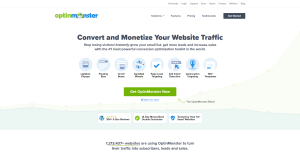Are you ready to make your brand stand out in the digital crowd? If so, it’s time to master the art of visual content optimization. The human brain processes visuals 60,000 times faster than text, making images and videos the key to capturing and holding your audience’s attention.
Optimizing visual content for online engagement, social media platforms, blog posts, and video sharing platforms can significantly boost your impact and visibility. As explained in our article on content writing, creating compelling and shareable content is essential to establishing your brand’s digital presence.
Whether you are a solopreneur, a business, or an agency, this article will guide you through leveraging the power of visual content to generate leads, increase engagement, and maximize impact across various digital platforms.
”Summary
In the digital world, visual content optimization plays a pivotal role in online engagement. High-quality visuals, when optimized, capture users’ attention, leading to an increase in engagement rates. They are processed 60,000 times quicker than text, making them more engaging and memorable. Effective visual content optimization strategies include using high-quality images and videos, optimizing file size, SEO-friendly filenames and alt texts, and creating appealing, shareable content.
Optimization is also crucial for social media platforms. Merely uploading photos or videos is not enough; they must be adjusted and enhanced to boost their visibility and impact. Optimization strategies involve using the correct image size and format, alt text and hashtags, and experimenting with video content.
Adding visual elements to blog posts can also be enhanced with optimization, choosing suitable images that complement the text and optimizing these images for SEO. Understanding the unique characteristics of each platform and adopting a strategic approach in creating and optimizing content can help maximize the impact of visual content on video sharing platforms.
Leveraging Visual Content for Online Engagement
Visual content plays a significant role in online engagement. High-quality and well-optimized visual content can grab the attention of users, leading to increased engagement rates. It’s crucial for businesses to understand how to leverage visual content optimization for effective online engagement.
Importance of Visual Content in Online Engagement
According to a report by Social Media Examiner, 32% of marketers believe visual content is the most important form of content for their business. This is because visuals are processed 60,000 times faster than text by the human brain, making them more engaging and easier to remember.
Visual content, such as infographics, videos, and images, can help businesses explain complex information in a simple and understandable manner. It can also create a stronger emotional connection with the audience, encouraging them to engage with the content.
Effective Visual Content Optimization Strategies
For successful visual content optimization, it’s essential to use high-quality images and videos. Blurry or pixelated visuals can harm the brand’s image and result in reduced engagement.
Moreover, it’s important to optimize the file size of the visual content. Large files can slow down the website’s loading speed, leading to a poor user experience and increased bounce rates. Tools like ImageOptim and TinyPNG can help in reducing the file size without compromising the quality.
Using SEO-friendly file names and alt texts for images can also contribute to visual content optimization. These practices make the images more accessible and help search engines understand the content of the image, improving the website’s SEO ranking.
Lastly, it’s crucial to create visually appealing and shareable content. This can encourage users to share the content on their social media platforms, increasing the brand’s reach and engagement.
Optimizing Visual Content for Social Media Platforms
Understanding the Importance of Visual Content Optimization
The advent of social media platforms has revolutionized the way businesses communicate, engage, and connect with their audience. One of the critical aspects of this communication is visual content. However, merely uploading images or videos isn’t enough. To truly harness the power of social media, businesses need to understand the importance of visual content optimization. Visual content optimization involves adjusting and enhancing your images or videos to improve their visibility, engagement, and impact on social media platforms.
Strategies for Optimizing Visual Content
When it comes to optimizing visual content for social media, several strategies can be employed. First, businesses should focus on creating high-quality, compelling, and relevant visual content. This could range from professionally shot photographs to well-designed infographics.
- Image Size and Format: Different social media platforms have different specifications for image sizes. For instance, the ideal image size for a Facebook post is 1200 x 630 pixels, while for Instagram it’s 1080 x 1080 pixels. Using the correct image size ensures your visual content displays correctly across different platforms.
- Use of Alt Text and Hashtags: Alt text and hashtags are powerful tools for visual content optimization. They make your content more discoverable and accessible to a wider audience.
- Experiment with Video Content: Video content is incredibly engaging and can dramatically increase your social media engagement rates. Try incorporating short videos, live streams, or animated GIFs into your social media strategy.
By effectively implementing visual content optimization, businesses can significantly improve their social media presence, enhancing visibility and engagement.
Enhancing Visual Content for Blog Posts
Visual content optimization is a fundamental aspect of creating blog posts that capture and retain the attention of your audience. Beyond just including images, the optimization process involves selecting the right visuals, ensuring they are of high quality, proper sizing, and implementing SEO practices. This part will delve into how to enhance visual content for blog posts.
Choosing the Right Visuals
For visual content optimization in blog posts, it’s crucial to select images that align with your content. They should complement the written material, providing a visual representation of the points being discussed. For instance, if you’re explaining a complex process or concept, using an infographic can help break down the information for easier understanding. Remember, the visuals you choose should add value to your content, not distract the reader.
Optimizing Your Images for SEO
Another crucial aspect of enhancing visual content for blog posts lies in optimizing images for SEO. Firstly, ensure you use relevant keywords in your image file names before uploading them to your blog. Secondly, make use of the ‘alt text’ feature. Here, describe your image briefly using your focus keyword. This not only helps visually impaired readers understand the image content, but it also boosts your SEO. Lastly, reducing image size for faster loading times can dramatically improve user experience and contribute to better SEO rankings.
Using High-Quality Images
The quality of your images has a significant impact on how your audience perceives your content. High-resolution images make your blog look professional and trustworthy. However, it’s essential to strike a balance between high quality and loading speed. Use tools such as Photoshop or online image compressors to reduce file size without compromising on the quality.
Maximizing Visual Content Impact on Video Sharing Platforms
Maximizing the impact of visual content on video-sharing platforms requires a keen understanding of the platform’s unique characteristics and a strategic approach to content creation and optimization. This section delves into how to make the most of your visual content on these platforms.
Understanding the Platform’s Algorithm
Each video-sharing platform operates on a specific algorithm that determines the visibility and reach of your visual content. For instance, YouTube’s algorithm favors videos that generate higher watch time. Therefore, optimizing your visual content involves creating engaging, high-quality videos that encourage viewers to watch till the end. Dropping your targeted keyword, ‘visual content optimization’, strategically in the video’s title, tags, and description also helps to enhance the visibility of your content on the platform.
Creating Platform-Specific Visual Content
Video-sharing platforms vary in terms of audience demographics and content preferences. For instance, TikTok users often prefer short, creative, and entertaining videos, while LinkedIn users gravitate towards professional and informative content. Thus, maximizing the impact of your visual content involves tailoring your content to suit the unique preferences of each platform’s audience. This might involve creating shorter, more dynamic videos for platforms like TikTok and Instagram, while longer, more detailed videos might be more appropriate for platforms like YouTube and LinkedIn.
Implementing Effective SEO Practices
Visual content optimization also involves implementing effective SEO practices. This includes researching and using relevant keywords, creating compelling titles and descriptions, and incorporating subtitles or closed captions. Such practices not only enhance the visibility of your visual content but also improve its accessibility, fostering a wider reach.
For instance, a video tutorial on ‘Visual content optimization for Instagram’ might include keywords such as ‘Instagram marketing’, ‘visual content’, and ‘content optimization’ in the title, tags, and description, thereby increasing its chances of being discovered by users interested in these topics.
Conclusion
Visual content optimization plays a pivotal role in driving online engagement and making your digital platforms more dynamic and engaging. High-quality, well-optimized visuals captivate users’ attention, enhancing engagement rates and making content more memorable and shareable. From social media to blog posts and video sharing platforms, understanding how to effectively utilize visual content optimization is paramount. It’s not just about uploading images and videos, it’s about refining and enhancing them to boost their visibility and impact. This includes using SEO-friendly file names, alt text, and experimenting with video content. It’s about balancing quality with load speed and understanding the unique characteristics of each platform. When done correctly, visual content optimization can significantly enhance your online presence, visibility, and engagement.

